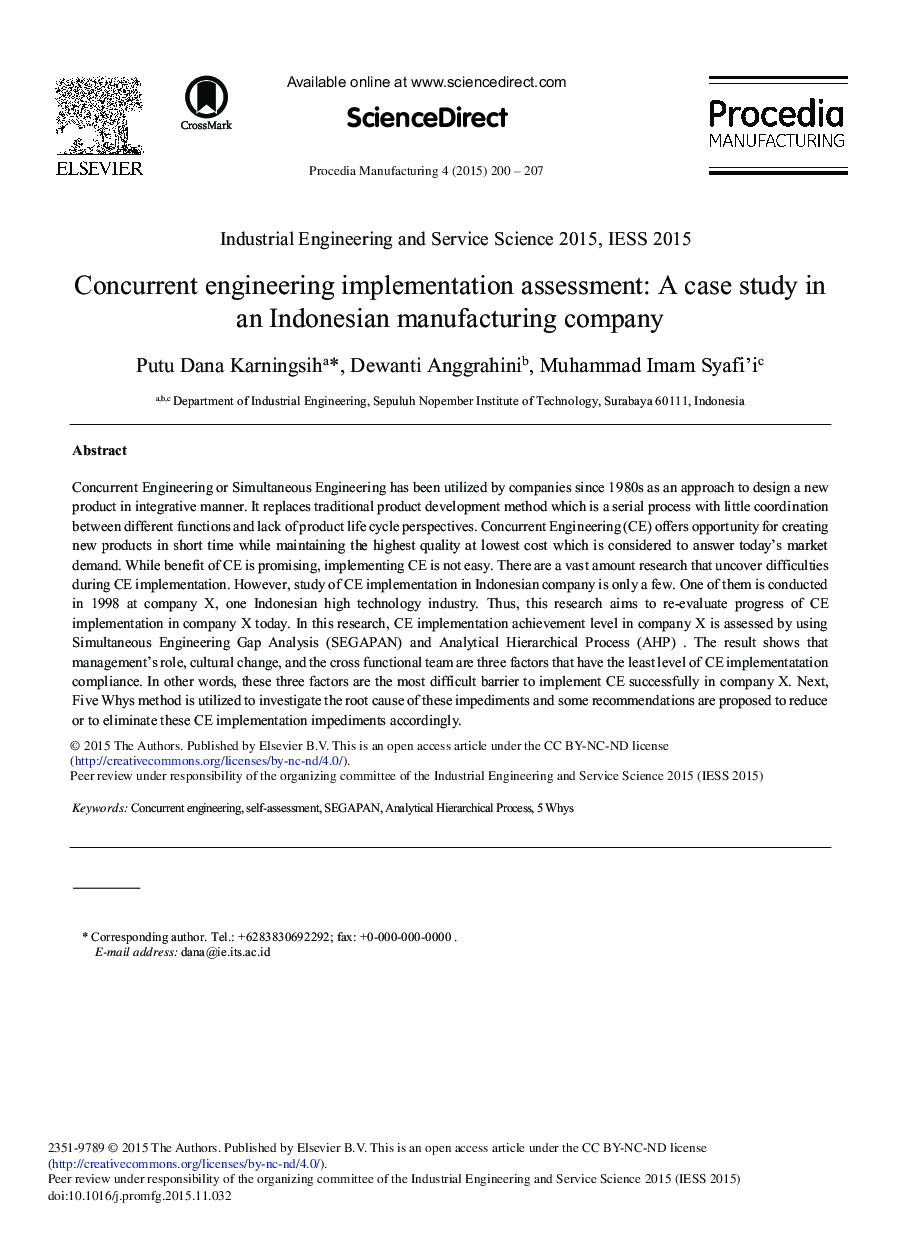| Article ID | Journal | Published Year | Pages | File Type |
|---|---|---|---|---|
| 1143524 | Procedia Manufacturing | 2015 | 8 Pages |
Concurrent Engineering or Simultaneous Engineering has been utilized by companies since 1980s as an approach to design a new product in integrative manner. It replaces traditional product development method which is a serial process with little coordination between different functions and lack of product life cycle perspectives. Concurrent Engineering (CE) offers opportunity for creating new products in short time while maintaining the highest quality at lowest cost which is considered to answer today's market demand. While benefit of CE is promising, implementing CE is not easy. There are a vast amount research that uncover difficulties during CE implementation. However, study of CE implementation in Indonesian company is only a few. One of them is conducted in 1998 at company X, one Indonesian high technology industry. Thus, this research aims to re-evaluate progress of CE implementation in company X today. In this research, CE implementation achievement level in company X is assessed by using Simultaneous Engineering Gap Analysis (SEGAPAN) and Analytical Hierarchical Process (AHP). The result shows that management's role, cultural change, and the cross functional team are three factors that have the least level of CE implementatation compliance. In other words, these three factors are the most difficult barrier to implement CE successfully in company X. Next, Five Whys method is utilized to investigate the root cause of these impediments and some recommendations are proposed to reduce or to eliminate these CE implementation impediments accordingly.
